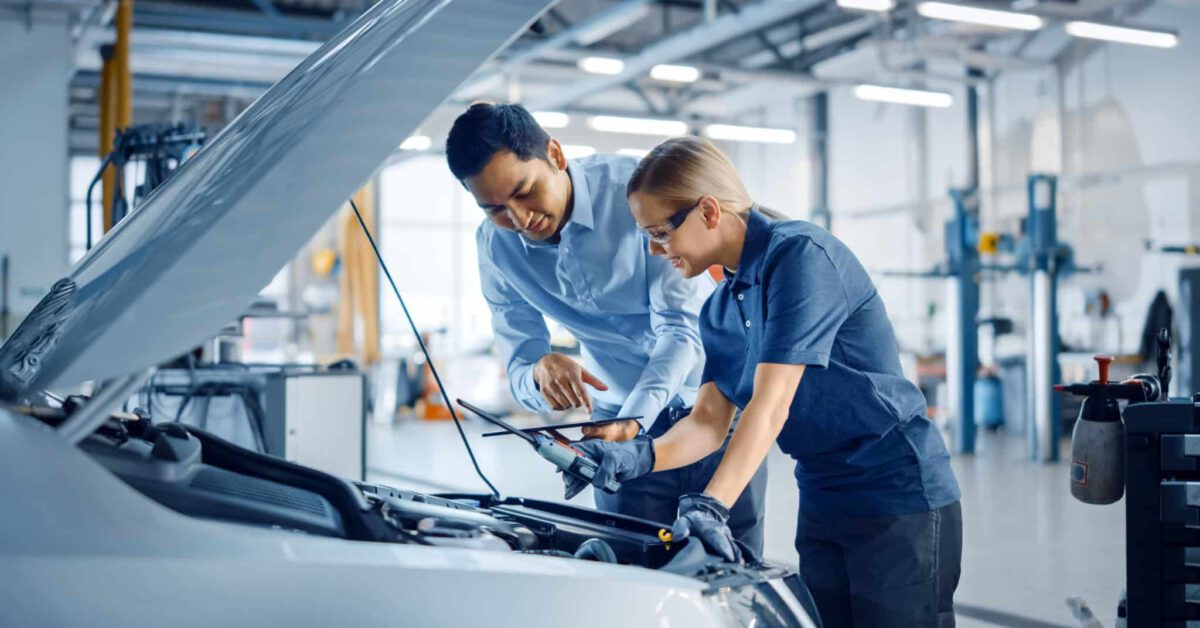
EV growth
The growth of the global electric vehicle (EV) market is staggering. In just 9 years, annual EV sales have gone from 120,000 to 6.6 million in 2021. As new OEMs come online and engineering advancements streamline the manufacturing processes, EV sales will continue to increase rapidly.
The cost of manufacturing is not without challenges. Inflationary pressures from supply chain bottlenecks and resource limitations increase the pressure to maintain margins and maximize growth, leading many manufacturers to look at leveraging the aftermarket for further profitability.
Differences in maintenance costs: EV vs. ICE
Before diving into aftermarket monetization, let’s examine the differences in maintenance costs between EVs and internal combustion engine (ICE) vehicles. According to market research by McKinsey & Company, more than half of all aftermarket revenue comes from standard wear-and-tear parts.
While maintenance and replacement for parts such as tires, cabin air filters, windshield wipers, and brakes are standard across all vehicles, EVs do not require maintenance such as oil changes, spark plug replacements, or fuel filter replacements. Consumer Reports estimates that the average cost-per-mile for maintenance is almost 50 percent less for EVs than for conventional ICE vehicles. To navigate this change in maintenance costs, service providers must leverage new technology while simultaneously understanding how their customers have evolved.
Adapting with the consumer
Purchasing an EV is a significant shift in vehicle ownership for most consumers. There are obvious differences between EV and ICE ownership such as charging your car versus filling up at a gas station, but there are also changes that may not be as quantifiable. While there are many independent service providers who can service ICE vehicles, the consumer preference has notably shifted towards dealers for EV maintenance according to auto analysts.
Let’s review some thoughts around why the consumer has shifted towards having maintenance performed by dealers:
- EVs are new technology, and the consumer may be hesitant to let just anyone service their vehicle. While there are plenty of resources available for maintenance, who better to provide service than the dealer who sold the vehicle?
- The battery. Enough said? To elaborate, battery health remains one of the most significant reasons why a consumer would elect to purchase an ICE vehicle over an EV. If you’re truly worried about the battery’s health deteriorating, having maintenance performed at a dealer can alleviate some of your anxiety. Additionally, you may also be able to access a loaner vehicle if extensive maintenance is required.
- The consumer may have purchased an extended warranty or service contract through the dealer at the time of vehicle sale, possibly as a result of items 1 or 2.
While there remain clear gaps in consumer confidence when it comes to purchasing an EV, those who do make the purchase will have the added benefit of leveraging the connectivity that comes with the new technology in the vehicles.
Leveraging new technology
Connectivity is playing an increasing role in the support and service of new vehicles. Software updates can now be transmitted overnight to update all aspects of the car, from entertainment and comfort to self-driving and driving performance. Manufacturers undoubtedly have strategies for monetizing this capability across their fleets and view this as a means to diversify revenue with a high margin.
Beyond pushing updates or features as a service to the consumer, connectivity also gives manufacturers and dealers insights into vehicle performance. Utilization and performance are essential to enabling continued engineering advancements. Additionally, manufacturers can monitor vehicle health and prescribe maintenance ahead of any realized downtime. The ability to shift from reactive to proactive and prescriptive maintenance is a game-changer for customer satisfaction and brand loyalty.
Connecting the dots: Service of the future
Margin pressures will continue to burden auto manufacturers, especially as they navigate the shift from ICE to EV. Considering the broader picture, manufacturers with a strong dealer network can subsidize this risk via the aftermarket.
Consumer sentiment is driving more maintenance visits to dealers for EVs. Single-visit profitability is lower due to the decreased costs of maintenance requirements. Furthermore, the frequency of visits is significantly less as well.
This area is where service offerings via extended warranties and service contracts can alleviate the risk around profitability. Access to connectivity data ensures that dealers can offer service contracts at a profitable price. With more vehicles serviced through dealer networks, more data can be leveraged to bolster service offerings, ultimately increasing profitability.
Is this aftermarket profitability enough to offset margin impact from potential supply chain disruptions, inflation, or any other macro situation? That’s not something anyone can answer today. However, leveraging new technology and staying ahead of consumer sentiment shifts can help your business become more resilient while continuing to improve customer loyalty.